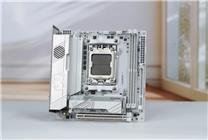Summary
- Intel’s latest Core Ultra 5 338H processor features a 10-core architecture, targeting mainstream users.
- The processor is part of the new Panther Lake series, with notable upgrades in turbo frequency and cache capacity.
- The integrated graphics, termed "Ruixuan B370," marks a shift from independent graphics solutions in earlier models.
Intel Core Ultra 5 338H Unveiled: What to Expect from the Latest Processor
On October 24, recent reports highlighted the emergence of Intel’s Core Ultra 5 338H processor within the GeekBench database. This announcement follows the debut of high-end models such as the Core Ultra X9 388H and Core Ultra X7 358H, which feature fully unlocked 12-core configurations. The new Core Ultra 5 338H, however, takes a different approach with a more moderate architecture.
Key Specifications
The Core Ultra 5 338H is an intriguing offering in Intel’s portfolio, boasting a varied core setup. It is configured with a total of 12 cores and 12 threads, incorporating 4 Performance (P) cores, 4 Efficient (E) cores, and 4 Low-Power Efficient (LPE) cores. This configuration represents a slight reduction in E cores compared to its X-series counterparts.
Significantly, the processor can reach turbo frequencies of up to 4.7GHz while maintaining an impressive 18MB L3 cache. It’s important to note that GeekBench is not yet equipped to differentiate between E cores and LPE cores accurately, nor can it fully recognize the L2 cache specifications.
Integrated Graphics: The Ruixuan B370
One of the standout features of the Core Ultra 5 338H is its integrated graphics, codenamed "Ruixuan B370." This marks an evolution in Intel’s design strategy, where the previous generation Ruixuan A380/A310 relied exclusively on discrete graphics cards. The new architecture aims to enhance the user experience by incorporating integrated graphics directly into the processor.
Moreover, there are speculations that the processor might also be branded as Core Ultra X5 338H, leaving room for interpretation regarding its final designation.
Panther Lake Architecture: Transitioning from Xe2 to Xe3
Intel has confirmed that the integrated graphics architecture of Panther Lake adopts the Xe3 architecture, categorized under the Ruixuan B series. This is a departure from the Xe2 architecture, which was associated with discrete graphics capabilities. While the transition from Xe2 to Xe3 raises some confusion, Intel has clarified that the new architecture is essentially an upgraded version of its predecessor, reflecting minimal significant changes.
For those closely observing Intel’s strategy, it’s essential to highlight that the upcoming version, Xe3P, will belong to the Ruixuan C series. This layered naming can indeed create tantamount confusion, especially for consumers trying to differentiate between various graphics solutions.
The Future of Intel’s Processor Lineup
The arrival of the Core Ultra 5 338H suggests a strategic positioning by Intel to cater to a broader audience, especially those seeking a balance between performance and efficiency. With its 10-core design and robust clock speeds, the 338H is engineered to appeal to users looking for dependable performance without necessarily entering the high-end market.
In summary, the Core Ultra 5 338H processor brings a mix of upgraded specifications and a fresh perspective on integrated graphics. As Intel continues to innovate and refine its product offerings, it’s clear that the Panther Lake series is set to redefine user expectations in both performance and value.









